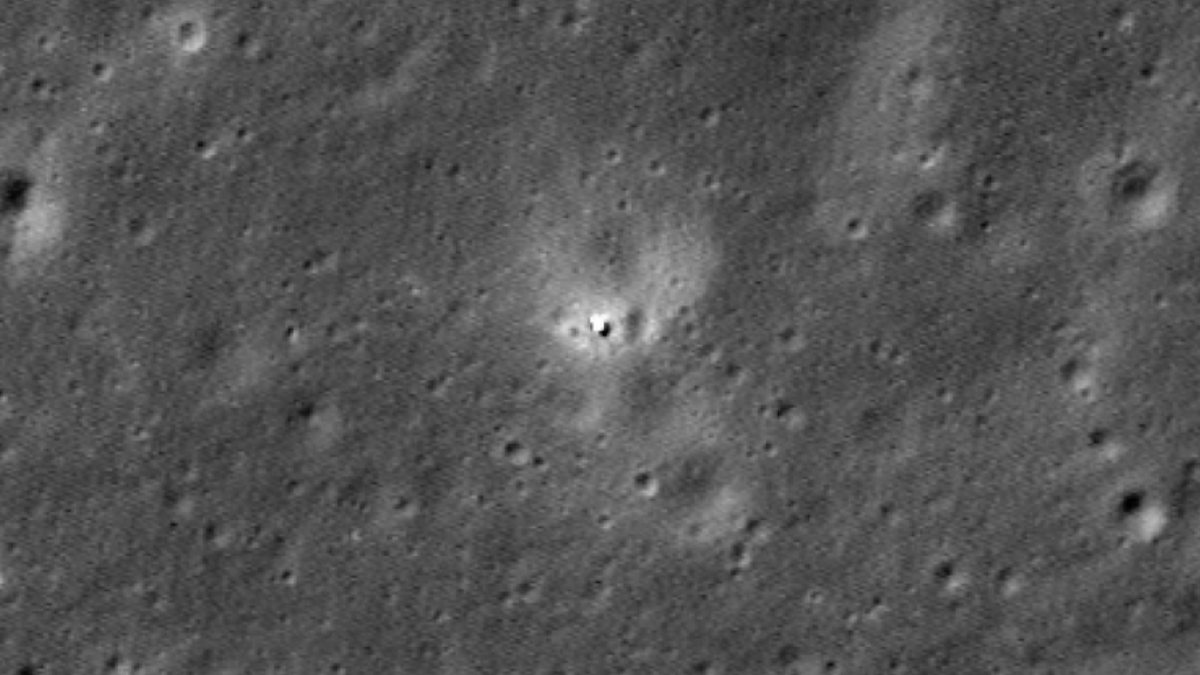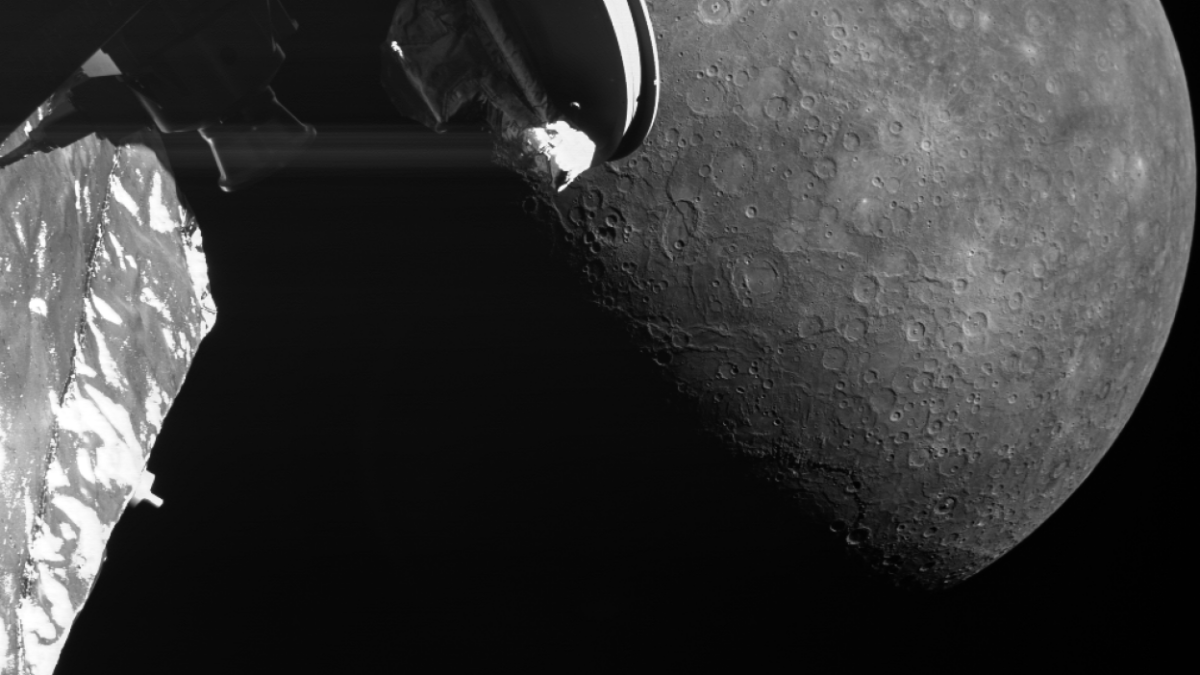
China’s Chang’e 6 lander, at center, landed on the moon on June 1, 2024. Credit: NASA / GSFC / Arizona State University
NASA’s moon-orbiting spacecraft can spot trails left by astronaut boots on the lunar surface.
Now, it’s captured a view of China’s most recent moon landing.
The China National Space Administration landed its robotic Chang’e-6 mission in the expansive South Pole-Aitken Basin in early June. A week later, on June 7, the NASA Lunar Reconnaissance Orbiter passed over and captured footage of the uncrewed lander, along with eroded terrain created by thrusters fired into the chalky ground. It’s the second time China has landed on the moon’s far side.
The first image below shows the Chang’e-6 spacecraft at center. NASA noted that it landed in a “mare unit,” meaning it settled down on an ancient lava flow that now appears as a dark-colored rocky plain. Below this new image is a before-and-after look at this region prior to the Chinese craft touching down. The Lunar Reconnaissance Orbiter, which has orbited the moon since 2009, is constantly capturing detailed views of our natural satellite, including craters left by a wayward rocket that slammed into the surface.
Mashable Light Speed
NASA’s Lunar Reconnaissance Orbiter Camera recently snapped this view of China’s Chang’e 6 spacecraft on the lunar surface. Credit: NASA / GSFC / Arizona State University
Before landing, the spacecraft hovered 100 meters (nearly 110 yards) above the surface, where it autonomously used lasers to locate lunar obstacles (like rocks or pits), and then descended. Once on the surface, the craft employed drills and robotic arms to collect rocks and soil. Then, an ascent vehicle atop the lander launched off the moon, ferrying these prized samples to an awaiting orbiter in space. Ultimately, the samples will plunge back to Earth in a protected capsule — similar to China’s successful moon rock return in 2020.
“The Chang’e-6 mission is the first human sampling and return mission from the far side of the moon,” the China National Space Administration said in a statement. “It involves many engineering innovations, high risks, and great difficulty.”
The 21st century space race is indeed underway. China has ambitious plans to land humans on the lunar surface by 2030.
NASA has famously landed six crewed missions on the moon — but over a half-century ago. It aims to soon return. The space agency’s looming Artemis 3 mission is currently slated to land in September 2026. Unlike the Apollo missions, this time astronauts will venture to the moon’s south pole, where scientists suspect water is preserved in ancient, shadowy craters. The ice will be an invaluable resource — for air, water, and the production of rocket fuel.
Mark is an award-winning journalist and the science editor at Mashable. After communicating science as a ranger with the National Park Service, he began a reporting career after seeing the extraordinary value in educating the public about the happenings in earth sciences, space, biodiversity, health, and beyond.
You can reach Mark at [email protected].
This newsletter may contain advertising, deals, or affiliate links. Subscribing to a newsletter indicates your consent to our Terms of Use and Privacy Policy. You may unsubscribe from the newsletters at any time.

